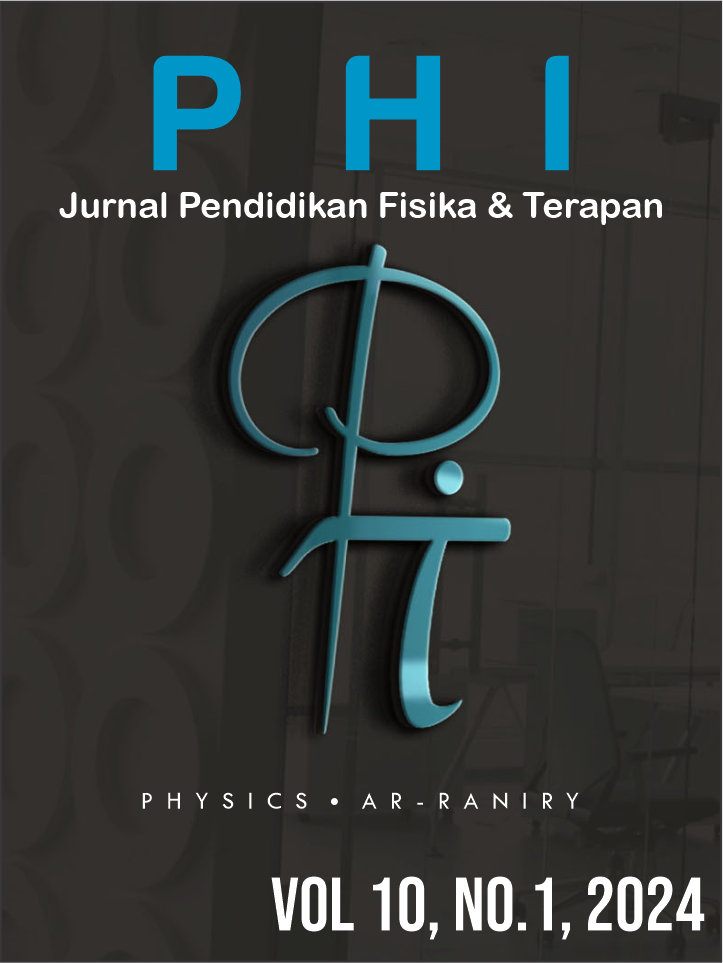Preliminary Study of pH, EC, TDS, and Heavy Metals Analysis of Oxbow’s Sediments in Bandung Region
DOI:
https://doi.org/10.22373/p-jpft.v10i1.22714Keywords:
Oxbow Lake, Upper Citarum River, Heavy MetalsAbstract
The Oxbow Lake is a vital part of river and it usually used for household, agricultural, and fisheries needs. The oxbow lake faces pollution risks from human activities. This study aims to assess the quality of water and sediment by pH, EC, and TDS of water and sediment as well as heavy metal content in sediment. The results show that the environmental conditions of the oxbow lakes around the Upper Citarum River are generally good because they fall within the safe limits for hygiene and sanitation standards, except for Babakan Patrol Oxbow Lake and Sapan Oxbow Lake. Unfortunately, the heavy metal levels in samples O1-2, O4-2, and O7-1 exceed sediment quality guidelines. These measurements indicate evidence of anthropogenic influence on sediment samples.References
Australian and New Zealand Environment and Conservation Council (ANZECC). 2000. ANZECC interim sediment quality guidlines. Report for the Environmental Research Institute of the Supervising Scientist, Sydney, Australia
Burton, Jr, G. A. 2002. Sediment quality criteria in use around the world. Limnology, 3, 65-76.
Ciazela, J., Siepak, M., & Wojtowicz, P. 2018. Tracking heavy metal contamination in a complex river-oxbow lake system: Middle Odra Valley, Germany/Poland. Science of the Total Environment, 616, 996-1006.
Kirana, K. H., Novala, G. C., Fitriani, D., Agustine, E., Rahmaputri, M. D., Fathurrohman, F., Rizkita, N. R., Andrianto, N., Juniarti, N., Julaiha, J., Zaenudinna, R. A., Nawawi, M. R., Mentari, V., Z., Nugraha, M. G. & Mulyadi, Y. 2019. Identifikasi Kualitas Air Sungai Citarum Hulu Melalui Analisa Parameter Hidrologi Dan Kandungan Logam Berat (Studi Kasus: Sungai Citarum Sektor 7). Wahana Fisika, 4(2), 120-128.
Kirana, K. H., Shalsabila, M. T., Putri, S. U., Fitriani, D., Agustine, E., Hamdan, A. M., Tamuntuan, G. H., Rosandi, Y. & Chaparro, M. A. 2024. Topsoil’s magnetic and electrical properties in a volcanic and tropical region. Environmental Monitoring and Assessment, 196(2), 160.
Naschan, M., Prasetya, A. T., and Sumarni, W. 2017. No Title. Indonesian Journal of Chemical Science.
Nasution, F. D., & Afdal, A. 2016. Profil Pencemaran Air Sungai di Muara Batang Arau Kota Padang dari Tinjauan Fisis dan Kimia. Jurnal Fisika Unand, 5(1), 1-6.
Rybicka, E. H., Adamiec, E., & Aleksander-Kwaterczak, U. 2005. Distribution of trace metals in the Odra River system: water–suspended matter–sediments. Limnologica, 35(3), 185-198.
Rusydi, A. F. 2018. Correlation between conductivity and total dissolved solid in various type of water: A review. In IOP conference series: earth and environmental science (Vol. 118, p. 012019). IOP Publishing.
Shafaria, M., Kirana, K. H., Fitriani, D., Agustine, E., Harja, A., & Endyana, C. 2023. Identification of Anthropogenic Materials in Lake Ciburuy Sediments Using Physico-Chemical Properties and Pollution Index. Rudarsko-geološko-naftni zbornik, 38(4), 117-134.
Downloads
Published
Issue
Section
License
Authors who publish with Jurnal Phi agree to the following terms:
- Authors retain copyright and grant the journal right of first publication with the work simultaneously licensed under a Creative Commons Attribution License (CC BY 4.0) that allows others to share the work with an acknowledgment of the work's authorship and initial publication in this journal.
- Authors are able to enter into separate, additional contractual arrangements for the non-exclusive distribution of the journal's published version of the work (e.g., post it to an institutional repository or publish it in a book), with an acknowledgment of its initial publication in this journal.
- Authors are permitted and encouraged to post their work online (e.g., in institutional repositories or on their website) prior to and during the submission process, as it can lead to productive exchanges, as well as earlier and greater citation of published work (See The Effect of Open Access).

















